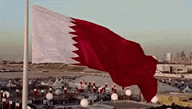Qatar
The Middle East country of Qatar is full of stories, environment and natural resources. Located on the Arabian Peninsula, Qatar is a small country with a population of 2.8 million people and a total land area of 11,586 square kilometers. It is known for its oil and gas production, as well as its increasingly diversified economy.
Qatar's rich culture and history are reflected in its stories. Tales of the Bedouins and their nomadic lifestyle, the pearl diving industry and the spice trade, as well as the country's religious heritage, are all part of Qatar's unique narrative. This is reflected in the country's traditional architecture and customs, as well as the cuisine and festivals celebrated throughout the year.
Qatar's environment is also an important part of its identity. The country has a warm and humid climate, with temperatures rarely dipping below 15 degrees Celsius. Qatar has a desert landscape, with sand dunes stretching across the country and providing a picturesque backdrop. Despite this desert landscape, Qatar has a range of wildlife, including small mammals, birds and reptiles.
Qatar is also blessed with a wealth of natural resources. The country is one of the world's leading producers of oil and gas, and it has an extensive fishing industry. Qatar is also rich in minerals, including iron ore, limestone, and phosphates. Furthermore, Qatar has a number of important agricultural products, including dates, grains, and vegetables.
Qatar's environment, stories, and natural resources are all integral parts of the country's identity. These elements combine to form a unique culture that is both vibrant and resilient. Qatar is an important country in the Middle East, and it is one that is sure to remain an important part of the region for many years to come.
====================
Think Tanks
